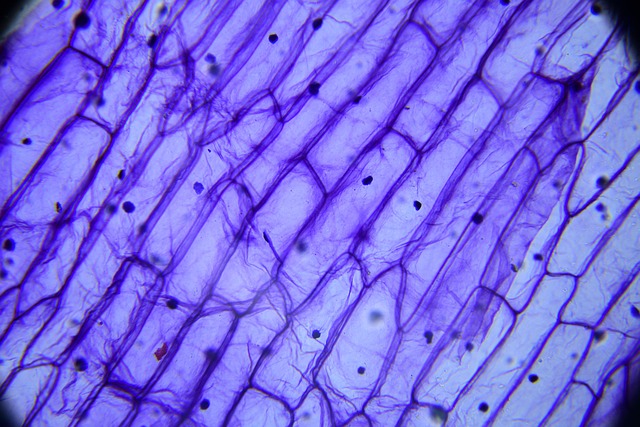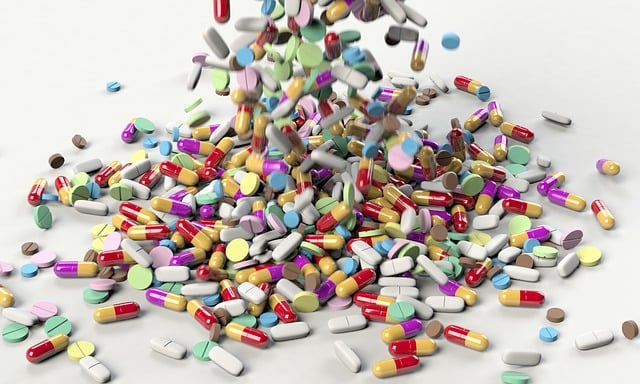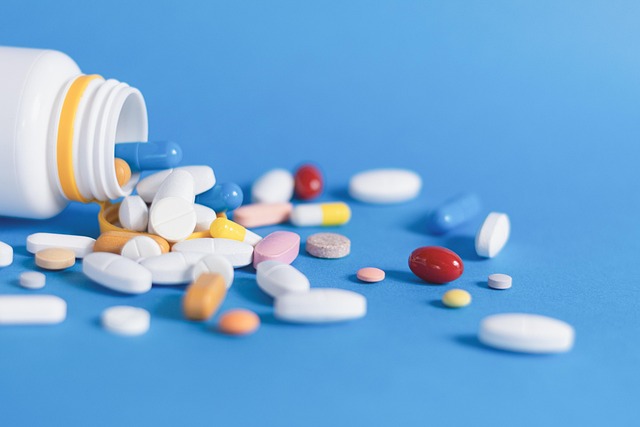GLP-1 receptor agonists (drugs) mimic natural hormones to manage type 2 diabetes, stimulating insulin production and slowing gastric emptying for improved blood sugar control. With diverse mechanisms and administration options (injections or oral), they offer both immediate and long-term benefits, including weight management and cardiovascular advantages. Clinical trials show effectiveness in glycemic control, and ongoing research explores their potential beyond diabetes. The future of GLP-1 drugs includes more potent, targeted treatments and combinatorial therapies, revolutionizing diabetes care with patient-friendly options.
“Uncover essential educational resources on GLP-1 receptor agonists, powerful tools in diabetes management. This comprehensive guide delves into the science behind these innovative drugs, exploring their mechanism of action and how they mimic natural processes. From understanding various types of GLP-1 drugs to weighing benefits and side effects, this article offers valuable insights for healthcare professionals and those seeking effective diabetes treatments. Discover real-life applications and glimpse into the future of GLP-1 therapy, as we explore the latest trends and emerging research in this dynamic field.”
Understanding GLP-1 Receptor Agonists: Their Role in Diabetes Management

GLP-1 receptor agonists (LRAs) are a class of medications that mimic the effects of the natural hormone glucagon-like peptide-1 (GLP-1). These drugs play a crucial role in diabetes management, particularly for individuals with type 2 diabetes. By activating GLP-1 receptors in the body, they stimulate insulin secretion in response to meals, helping to lower blood sugar levels naturally.
In addition to their insulinotropic effects, GLP-1 LRAs also slow gastric emptying, reducing the rate at which glucose is absorbed into the bloodstream. This dual action makes them a valuable tool in diabetes treatment, offering both immediate and long-term benefits. The use of GLP-1 drugs can lead to improved glycemic control, weight management, and potential cardiovascular benefits, thus revolutionizing diabetes care and providing patients with a more effective and convenient treatment option.
The Science Behind GLP-1: How These Drugs Mimic Natural Processes

GLP-1, or glucagon-like peptide-1, is a hormone produced naturally by our bodies in response to food intake. It plays a crucial role in regulating blood sugar levels and promoting feelings of fullness. This natural process has led to the development of GLP-1 drugs as a therapeutic approach for managing diabetes and obesity.
These drugs act as agonists, mimicking the effects of GLP-1 by binding to specific receptors in the body. They stimulate insulin secretion when blood sugar levels are high, help reduce appetite, and slow down gastric emptying. This multi-faceted action makes GLP-1 drugs a game-changer in diabetes treatment, offering not just blood sugar control but also weight management benefits.
Types of GLP-1 Drugs: Exploring the Different Classes and Their Mechanisms

GLP-1 drugs, or glucagon-like peptide-1 receptor agonists, are a class of medications designed to mimic the effects of the natural hormone GLP-1. These drugs play a significant role in managing type 2 diabetes by enhancing insulin secretion and suppressing glucagon release. The market offers several types of GLP-1 drugs, each belonging to distinct chemical classes with unique mechanisms of action.
The primary classes include exenatide, liraglutide, semaglutide, and dulaglitide. Exenatide and liraglutide are synthetic versions of GLP-1, while semaglutide and dulaglitide are modified to improve their duration of action. Each class has its own advantages, such as once-daily administration or enhanced blood sugar control. Understanding these variations is crucial for healthcare providers in selecting the most suitable GLP-1 drug for individual patients based on their specific needs and preferences.
Benefits and Side Effects: Weighing the Pros and Cons of GLP-1 Therapy

GLP-1 receptor agonists, often referred to as GLP-1 drugs, offer a promising avenue for managing type 2 diabetes and weight management. One of their key benefits is their ability to mimic the effects of the natural hormone glucagon-like peptide-1 (GLP-1), which stimulates insulin production and suppresses glucagon release, leading to improved blood sugar control. Moreover, these drugs can enhance satiety and reduce appetite, making them valuable in weight loss efforts.
However, as with any treatment, GLP-1 therapy isn’t without potential side effects. Common ones include nausea, vomiting, diarrhea, and abdominal pain. Some patients may also experience headaches or dizziness. While most side effects are mild and transient, they can be a consideration for individuals considering this treatment option. It’s crucial to weigh these pros and cons with healthcare providers to determine if GLP-1 drugs are the right choice for their specific needs and health profiles.
Administering GLP-1 Receptor Agonists: Injection vs. Oral Administration

GLP-1 receptor agonists, a key class of diabetes medications, can be administered in two main ways: injection or oral consumption. While both methods deliver the drug to target GLP-1 receptors in the body, they have distinct characteristics and implications for patients.
Injection routes provide faster and more consistent absorption, making them ideal for immediate blood sugar control. However, they require frequent injections, which can be cumbersome for patients. In contrast, oral administration offers a more convenient approach, aligning with the natural rhythm of daily life. Yet, it may take longer for GLP-1 drugs to reach peak effectiveness and might experience varying absorption rates due to factors like food intake or digestive health. The choice between injection and oral administration ultimately depends on individual patient needs, preferences, and healthcare provider recommendations.
Real-Life Applications: Case Studies of Successful GLP-1 Drug Implementations

In real-world settings, GLP-1 receptor agonists have proven to be transformative in managing type 2 diabetes. Case studies highlight their successful implementation, demonstrating improved glycemic control and reduced hypoglycemic events. For instance, a clinical trial involving patients with inadequate glycemic control on diet and exercise alone showed significant reductions in HbA1c levels after adding a GLP-1 drug to their regimen. Another study focused on patient quality of life, where the use of these drugs led to increased satisfaction and better adherence to treatment plans due to their once-daily administration and minimal side effects.
These applications extend beyond diabetes management, with ongoing research exploring GLP-1 drugs’ potential in weight management and cardiovascular health. Real-life implementations have also revealed valuable insights into patient compliance and preferences, emphasizing the importance of patient education and support for optimal outcomes. As a result, healthcare providers are increasingly incorporating these drugs into treatment algorithms, benefiting from their proven efficacy and patient-friendly profiles.
Future Prospects: Emerging Trends and Research in GLP-1 Receptor Agonist Therapy

The future prospects of GLP-1 receptor agonist therapy look promising, with ongoing research exploring new avenues for improving metabolic control and overall patient outcomes. One emerging trend is the development of more potent and selective agonists, aiming to mimic the natural dynamics of GLP-1 more closely. These advanced drugs are designed to offer enhanced efficacy while minimizing side effects, particularly those related to gastrointestinal distress. Additionally, researchers are delving into personalized medicine approaches, tailoring treatments based on individual patient characteristics and genetic profiles.
Another exciting direction is the investigation of combinatorial therapies involving GLP-1 drugs and other classes of medications for type 2 diabetes management. By combining these treatments, scientists hope to achieve synergistic effects, potentially reducing overall medication requirements and improving long-term glycemic control. Furthermore, ongoing clinical trials are evaluating the role of GLP-1 receptor agonists in preventing cardiovascular events and renal complications, expanding their therapeutic potential beyond glycemic management.
